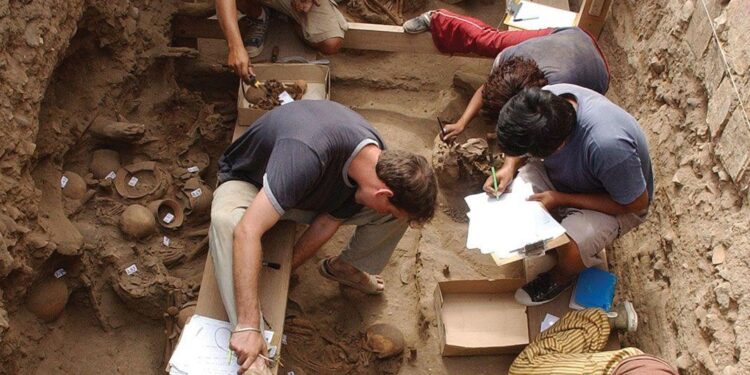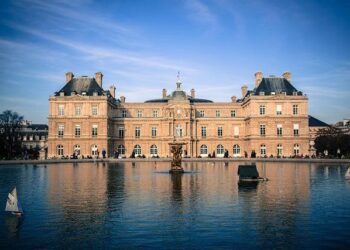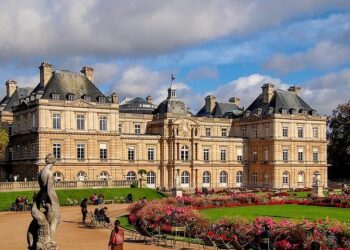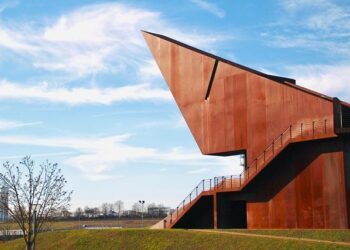Archaeologists have made a remarkable discovery in Luxembourg, unearthing 141 ancient gold coins that offer a rare glimpse into Roman imperial history. The coins, each bearing the likenesses of nine different Roman emperors, provide valuable insights into the region’s role within the vast Roman Empire. This significant find, recently reported by Smithsonian Magazine, highlights the continuing importance of archaeological efforts in shedding light on Europe’s ancient past.
Archaeologists Unearth Rare Cache of Ancient Gold Coins in Luxembourg
In a remarkable archaeological find, researchers in Luxembourg have uncovered a hoard of 141 ancient gold coins, each intricately stamped with the likenesses of nine distinct Roman emperors. The coins, dating back to the late Roman Empire, offer a rare glimpse into the monetary system and political landscape of the era. Detailed analysis revealed the coins span a period from the 3rd to early 4th century AD, suggesting they were accumulated over several decades before being buried.
The discovery site, located near the Moselle Valley, has yielded artifacts that underscore the region’s importance as a crossroads of commerce and culture. Key details include:
- Coin Material: 22-carat gold
- Emperors Featured: From Gallienus to Constantine I
- Condition: Remarkably well-preserved with visible inscriptions
- Historical Implications: Evidence of trade routes and political influence in Roman frontier regions
| Emperor | Reign | Number of Coins |
|---|---|---|
| Gallienus | 253-268 AD | 32 |
| Aurelian | 270-275 AD | 18 |
| Constantine I | 306-337 AD | 27 |
| Others | Various | 64 |
Coins Provide Unique Insights into Reigns of Nine Roman Emperors
The remarkable discovery of 141 ancient gold coins in Luxembourg opens a rare window into the fluctuating fortunes and legacies of nine prominent Roman emperors. Each coin is intricately engraved with imperial portraits, allowing historians to chart the evolution of imperial iconography and political propaganda across different reigns. The coins not only serve as exquisite artifacts of craftsmanship but also provide valuable clues about the economic conditions, religious affiliations, and military achievements that shaped the era.
Among the emperors featured are figures whose reigns spanned from periods of unprecedented expansion to times of internal turmoil. The coins reveal key motifs, including:
- Changes in emperor titles and honorifics reflecting shifts in power and status
- Symbolic imagery highlighting divine favor and military victories
- Variations in minting styles indicating regional influences across the empire
| Emperor | Reign | Distinctive Coin Motif |
|---|---|---|
| Augustus | 27 BC – AD 14 | Laurel wreath & Pax symbols |
| Hadrian | AD 117 – 138 | Fortress walls & Hercules imagery |
| Marcus Aurelius | AD 161 – 180 | Philosopher’s pose & military standards |
| Caracalla | AD 198 – 217 | Emperor with radiate crown |
Experts Recommend Enhanced Preservation Efforts and Further Excavations
Following this remarkable discovery, experts emphasize the critical need for enhanced preservation measures to safeguard the integrity of the site. Conservation specialists suggest implementing cutting-edge environmental controls and real-time monitoring systems to prevent deterioration caused by exposure to air and moisture. This approach aims to protect not only the 141 gold coins but also any surrounding artifacts that may yet be uncovered, ensuring that this invaluable glimpse into Roman history remains intact for future generations.
Furthermore, archaeologists advocate for expanded excavation efforts, highlighting potential areas of interest revealed by preliminary geophysical surveys. These zones could harbor additional treasures or structural remains, offering further insight into the region’s significance during the Roman era. Key recommendations include:
- Incremental excavation phases to minimize site disruption
- Multidisciplinary collaboration to analyze findings comprehensively
- Public outreach programs to engage and educate local communities
| Recommended Actions | Primary Objective |
|---|---|
| Install climate-controlled display cases | Protect coins from environmental damage |
| Conduct ground-penetrating radar surveys | Identify undiscovered archaeological features |
| Collaborate with historians and conservators | Comprehensive analysis of artifacts |
| Develop educational exhibits | Raise public awareness and support |
Insights and Conclusions
The discovery of 141 ancient gold coins depicting nine Roman emperors in Luxembourg offers a rare glimpse into the region’s rich historical tapestry and its connections to the Roman Empire. As archaeologists continue to analyze the coins, experts hope to gain deeper insights into the economic and political landscape of the era. This remarkable find not only enriches our understanding of Roman influence in Western Europe but also highlights the ongoing importance of archaeological work in uncovering the complexities of the ancient world.
















